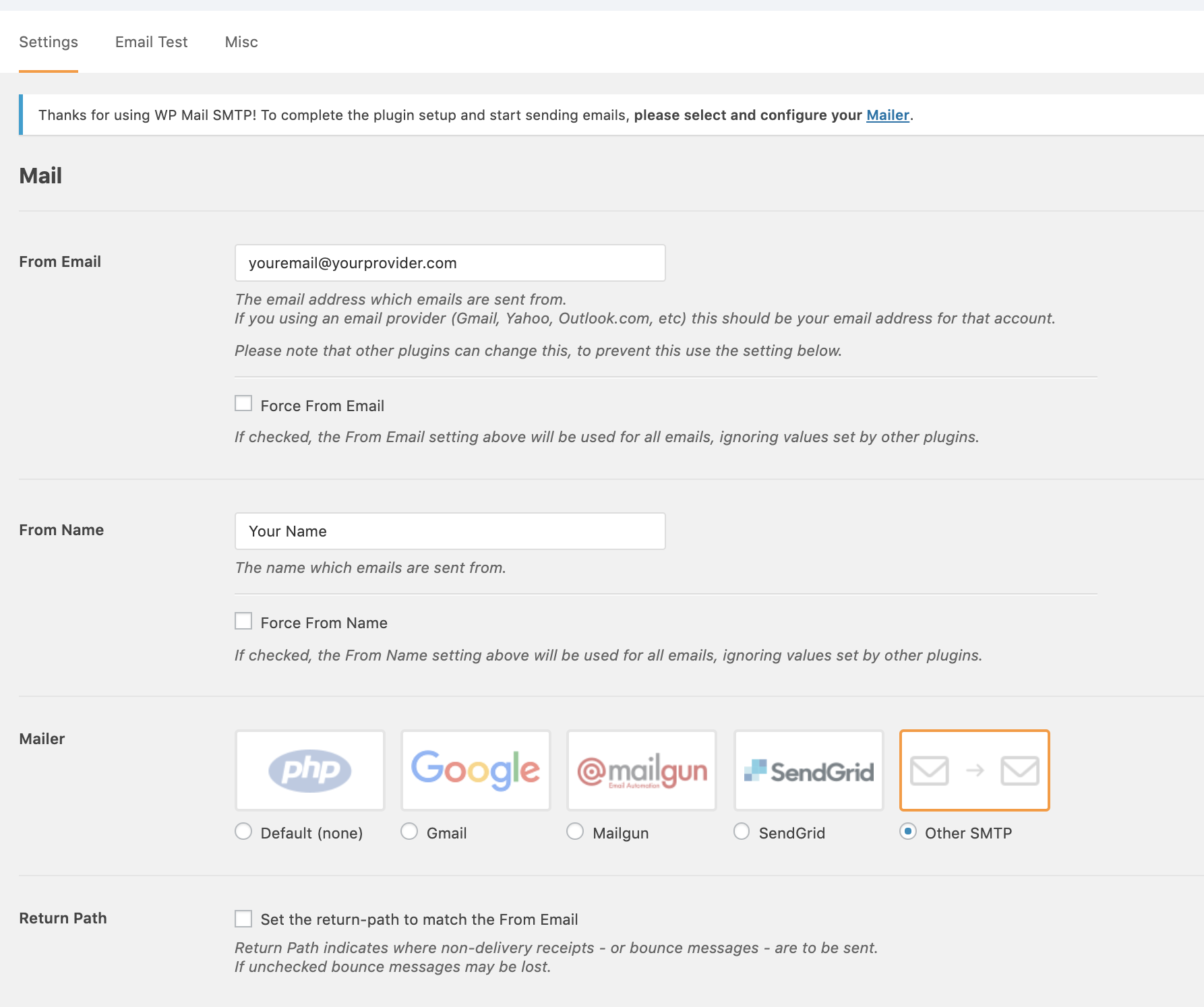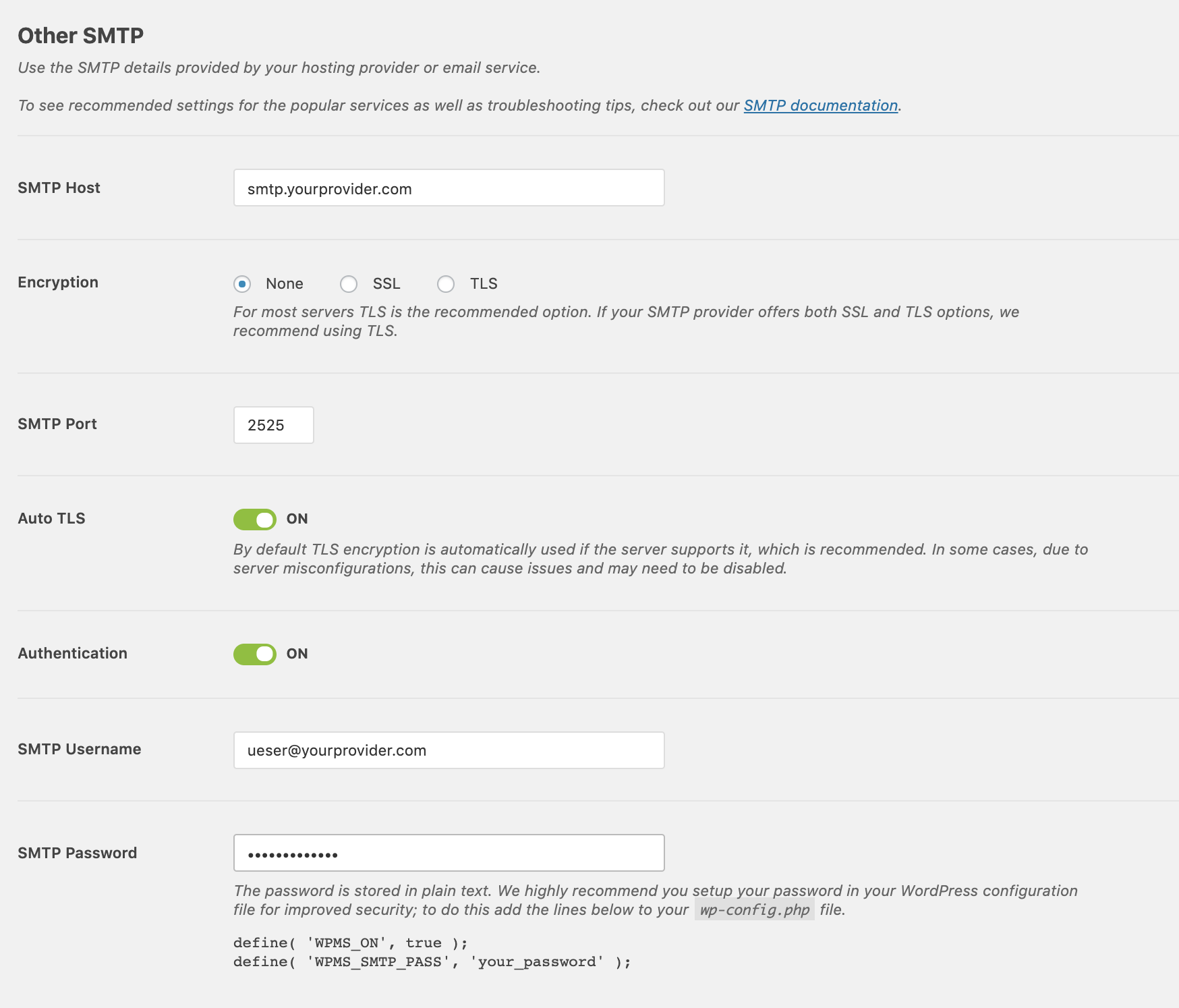Sending Email on WP Engine
While we manage many parts of your website hosting, default E-Mail functionality on WP Engine is limited. Normal emails, such as password resets, will not typically have any issues sending. However, for robust email functionality, monitoring and scalability, we highly suggest utilizing a 3rd party email host.
This guide will explain email limits, why we impose them, and how to ensure your website can successfully send email.
WP Engine Email Limits
At WP Engine we want to focus on what we’re great at: providing our customers with the fastest and most secure premium WordPress hosting experience. By offloading email campaigns and blasts to an external service you help protect the security and performance of the server your site is using. While it’s possible WP Engine could add full email services and charge you for it, we want to refer that business to other providers to ensure the best results for you.
To ensure server stability we impose a hard limit on the amount of emails that can be sent in an hour. In order to prevent abuse of this limit, we will not share the exact amount. The limit is enough to send a functional amount of emails such as password resets, but will not support a full email campaign. For robust email functionality, monitoring and scalability, we highly suggest customers utilize a 3rd Party email host such as Gmail or MailChimp which have their own email API. There are several primary reasons why:
- If any emails sent are flagged as spam, this is reflected back on your IP address. Standard emails generated via WordPress are sent from our IP infrastructure (think “password reset”). If those IP addresses ever get blocklisted for spam, it will adversely affect a large number of customers.
- When you send an email blast, you also want to ensure deliverability and tracking. An email host specializes in monitoring and logging email transactions on your behalf. Tracking IP addresses to make sure emails reach their destination is part of their business, just like managing the scalability of your high traffic WordPress sites is ours.
- Default WordPress emails are generated by a command line service. The service generating these emails is generic and doesn’t actually allow us to manage and ensure deliverability. Rather than sending system emails on the server with that basic software, we actually also use a 3rd party managed SMTP provider. This ensures a high level of deliverability and consistency, even for WordPress system emails. Those little details make a big difference for the sites you choose to host with us.
- WP Engine’s servers are not optimized for sending mail. This means we do not have logs or monitoring available if you experience issues with emails not sending correctly. More robust logging, spam control and scalability can only come from a true email host.
Recommended Email Hosts
We typically recommend using a 3rd party transactional mail provider such as Mailgun, Gmail, or Sendinblue. These services allow you to send emails from a specialized mail IP and will include a higher level of customization, such as more robust logging.
If you need to send an email blast, you also want to ensure deliverability. Companies like MailChimp, Mandrill, Sendinblue, and Constant Contact spend a great deal of time and resources managing their mail IPs. Ensuring email deliverability is one of their top priorities, just like managing your website performance is one of ours.
General SMTP Configuration
- Sign up with your desired email host
- Perform any necessary domain validation to activate their services
- Install and activate a compatible SMTP plugin
- Email services that run using an API typically have their own plugin
- We recommend the plugins WP Mail SMTP or Post SMTP for those email services that don’t offer their own plugin
- Your SMTP plugin options should appear similar to the following:

- Fill in your SMTP options with the host, port, encryption, and authentication details provided by your email host
- Save your changes

Email Ports
WP Engine’s infrastructure providers (Google and AWS) do not allow mail to be sent over port 25. Any 3rd party provider must support sending emails over alternate ports or via an API.
- Port 2525 is recommended
- Ports 587 and 465 are allowed
- Microsoft Office 365 can only use port 587
